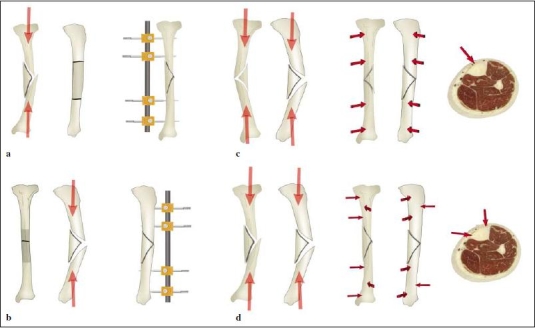Fig. 11.

Bending fractures which produce butterfly fragments tend to displace in the direction of the original deforming force. The ‘apex’ of the butterfly denotes the tension side whereas the ‘base’ denotes the compression side. By adjusting the plane of application of the external fixator pins, control of potential displacement can be maximised: (a) Bending forces which produce a butterfly fragment in the coronal plane controlled by a coronal plane fixator. (b) Fracture with a butterfly fragment in the sagittal plane held with a sagittal plane fixator. (c) This fracture produced a butterfly fragment seen in both AP and lateral X-rays — it suggests the bending force was directed from anteromedial to posterolateral, hence the fixator in the anteromedial plane. (d) This fracture was caused by a bending force predominantly in an anterolateral to posteromedial direction — a fixator lying in this plane would breach the safe corridors for pin insertion, therefore a biplanar fixator is appropriate
